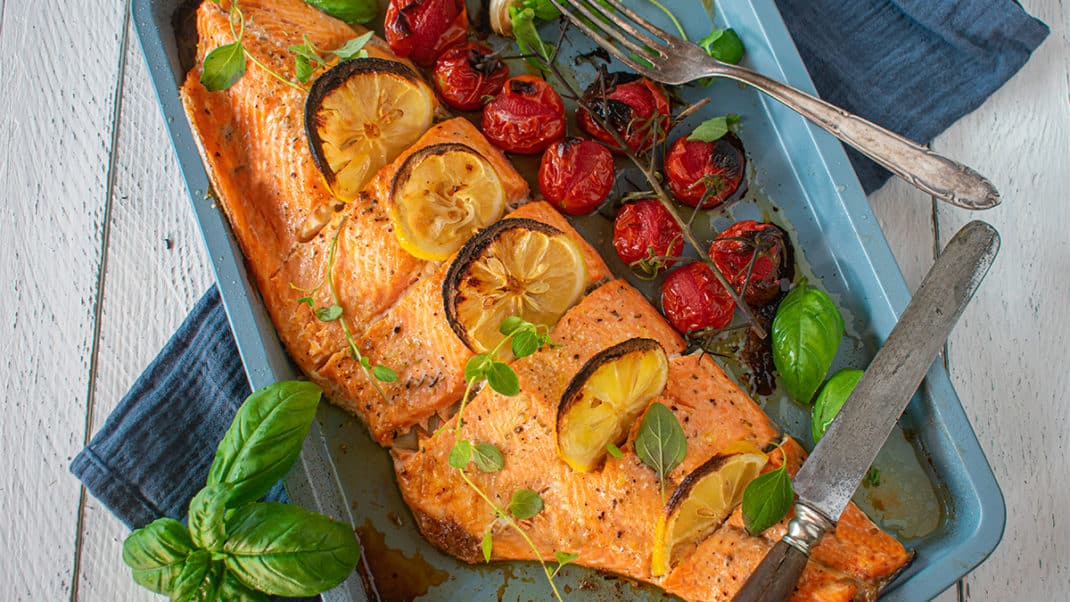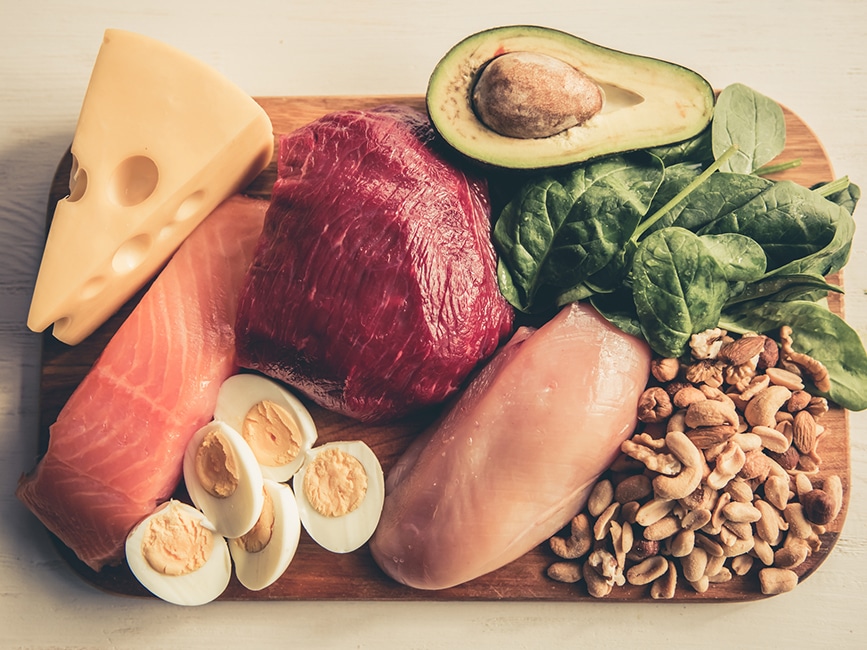Using Glycemic Index to Improve Athletic Performance
Why carbohydrates can create responses that can hinder or help athletic performance.
With all the hype today about protein being the most vital nutrient for athletes
(not true, by the way), many athletes
are beginning to look at carbohydrates
differently. The truth is, carbohydrates play an essential role in the diet because they are a key source of energy and provide the glucose necessary to replace the glycogen lost during training and competition.
In fact, carbohydrates eaten before and during exercise, primarily in the form of sport drinks, bars and gels, help maintain blood glucose levels and prevent premature fatigue and decreased performance. Carbohydrates are important after exercise as well, as they replenish muscle and liver glycogen, restoring the athlete’s capacity for intense training and competition.
Glycemic Response to Complex and Simple Carbohydrates
Researchers used to think that
- complex carbohydrates (breads, cereals, vegetables and foods high in starch) were digested slowly and caused little change in blood glucose levels
- simple carbohydrates (fruit juice and high-sugar foods and beverages) caused blood glucose levels to rapidly rise and then drop precipitously
However, current research shows that the glycemic response, the increase in blood glucose levels after a food or combination of foods are consumed, can vary greatly. In fact, some complex carbohydrates can be digested, absorbed and utilized as quickly as simple sugars, meaning that they have similar glycemic responses.
Because of this new understanding, there is confusion about which carbohydrates should be eaten to achieve the maximum performance benefit. In an attempt to clarify the issue, the scientific terms glycemic index and glycemic load, once heard only in the laboratory, have become common vernacular.
Carbohydrate foods can now be classified as producing either a high, moderate or low glycemic response. The glycemic response of a food is a measure of the food’s ability to raise blood glucose (blood sugar). Foods that produce a high glycemic response are expected to produce a greater increase in muscle glycogen when compared to foods producing a low glycemic response, due to the rapid increase in blood glucose levels.
In an attempt to standardize the glycemic response of various foods among individuals, researchers have categorized foods using the glycemic index (GI). The GI gives a numeric value for the glycemic response produced by a food, so that foods can easily be compared.
The calculation to determine the GI of a food is given below. The GI for a particular food or combination of foods is determined by
- comparing the blood glucose response within a 2-hour time period following
ingestion of 50 grams of that food
- comparing this number to that of white bread, which has an arbitrarily defined GI of 100, and is used as the standard for all comparisons. Fifty grams (g) of glucose can also be used as a standard
Fortunately, charts containing the GI responses of a variety of foods and beverages can be used to create meals and snacks with high or low glycemic response characteristics. Athletes can use these charts to identify the impact of certain foods and food combinations. For example, the greater the GI, the greater the change in blood glucose that will occur and the greater the glycemic load that is delivered to the body. The glycemic load is a way of expressing the impact of the carbohydrate consumed on the body, taking GI into account.
The GI only reflects how the blood glucose level will change after the ingestion of a food, beverage or meal. If an athlete eats only a small amount of a high GI food, there will only be a small rise in blood sugar because the amount of food is low. Thus, it is important to know the amount of carbohydrate being consumed and the associated GI index. Remember that when foods with various GIs are combined, the total GI of the meal will depend on the amount of each of these foods and their individual GI values.
Foods with a high GI cause a greater change in blood glucose and insulin, which results in greater glycogen replacement in the muscles. This is demonstrated in a study that shows glycogen replacement is 30% higher in well-trained cyclists who are fed high versus low GI foods for 24 hours after 2 hours of exhaustive exercise (Burke, Collier & Hargreaves 1993).
Unfortunately, it is not practical to plan all meals around the GI of foods. When the desire is to increase muscle glycogen, especially after intense exercise, it may be more practical to
- provide 50–100 g (200–400 kilocalories) of high GI carbohydrate to athletes immediately after glycogen-depleting exercise
- encourage athletes to eat high-carbohydrate foods that are packed with vitamins and fiber, especially whole grains, fruits and vegetables. High GI foods and high-carbohydrate sport nutrition products can also help improve glycogen replacement and are especially helpful during times of intense training or competition
Conversely, consuming moderate and low GI foods may also play a role in sport because these foods slowly allow glucose to enter the bloodstream. For example, it has been shown that moderate GI foods fed before endurance exercise actually help prevent the fall in blood glucose observed during 90 minutes of exercise compared to higher GI foods (Kirwan, O’Gorman & Evans 1998). Thus, foods with lower GI scores might work in the following situations:
- athletes who want to minimize changes in blood glucose should select more medium to low GI types of foods (beans, legumes, whole grains, fruits or vegetables). Moderate and low GI foods are good choices for mealtimes when rapid carbohydrate replacement is not a critical issue.
- athletes who are doing endurance exercise may want to consume a moderate to low GI meal before exercise to promote sustained carbohydrate availability during exercise.
The scientific thinking about and practical applications for glycemic response are still evolving. For example, a low glycemic response could result from slower entry of the ingested carbohydrate into the bloodstream or as a result of rapid removal from the blood into the muscles. If the latter is true, then some low glycemic foods may actually be preferable for speeding recovery. Future research will undoubtedly help refine the practical recommendations for athletes.
Sponge Cake
Corn Tortilla
Brown Rice
Green Peas
Cracked Barley
White Rice (long grain)
Sweet Potato
Brown Rice
Mango
Pastry
Pita Bread, white
MILTI-BRAN CHEX® Cereal
Buckwheat
Orange/Grapefruit Juice
Oatmeal, cooked
Basmati Rice
Kiwifruit
SNICKERS® Bar
POWERBAR®, chocolate
Oat Bran Cereal
Bulgur
Banana
7-Grain Bread
Ice Cream, low fat
Grapes
Durum Spaghetti
Oat Bran Bread
Linguine
Sweet Corn
100% Whole-Wheat Bread
Angel Food Cake
Doughnut
Hard Candy
Bagel, white
Cornflakes
TOTAL® Cereal
Raisin Bran Cereal
Shredded Wheat
Raisins
GRAPE-NUTS®
Cornmeal
Couscous
Corn Chips
Croissant
Maltose
Glucose
Sucrose
Barley Flour Bread
CHEERIOS®
CREAM OF WHEAT®
Millet
Soda Crackers
Watermelon
Pancakes
Honey/Syrups
English Muffins
Waffles
White Bread
Corn Bran Cereal
CRISPIX® Cereal
RICE KRISPIES® Cereal
Ice Cream
Molasses
Baked/Mashed Potatoes
Pretzels
Soft Drinks
POP-TARTS®
SPECIAL K® Cereal
Rye Flour Bread
CORN CHEX® Cereal
Barley Kernel
Bread
Milk (whole/skim)
9-Grain Bread
Plums
ALL-BRAN® Cereal
Barley, boiled
Yogurt (all types)
Grapefruit/Oranges
Beans (all types)
Peanuts/Cashews
Rice Bran
Apple (whole/juice)
Peaches (fresh)
Lentils
Tomato Soup/Juice
IRONMAN Bar, chocolate
Apricots (dried)
Pears (fresh)
Brown Rice
Chickpeas/Hummus
Glycemic Index (GI) = blood glucose test food (beans)
———————————————————————– x 100
blood glucose response to reference food (white bread)
References
Kirwan, J.P., O’Gorman, D., & Evans, W.J. 1998. A moderate glycemic meal before endurance exercise can enhance performance. Journal of Applied Physiology, 84 (1), 53–9.





